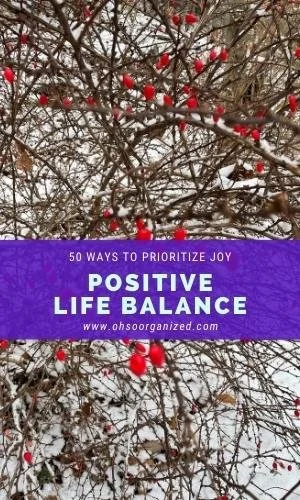We’re in the last week of this year and in full holiday mode. You may feel stressed, calm, conflicted, anxious navigating holiday dynamics, sad, lonely, ready for company, happy this year is almost over, excited about your plans for next, grateful, ambivalent, uncertain, exhausted, or off-balance. No matter where you are or what you are feeling, increasing your joy awareness will have a positive outcome. In fact, experiencing more joy will bring a powerful counter-balance to life’s challenges.
One of the highlights of my week is a regular meeting I have with the Executive Mom Nest advisors and members. Marcy Stoudt, the Nest founder, developed a four-pillar concept, which she integrates into our gatherings and her coaching work.
The pillars are:
Vivid Vision
Aligned Action
Growth Mindset
Prioritizing Joy
During our last meeting, we focused on the pillar, Prioritizing Joy. She asked us to bring forward the “feeling of joy” by listing things that make you feel “comforted, present, inspired, and just plain good.” This was such a powerful thing to do. I encourage you to take a few minutes to create your own list.
“Joy brings a powerful counter-balance to life’s challenges.”
Here are fifty ways joy finds me:
Discovering bright spots of color in the bare winter landscape
Putting on my new cozy purple slippers
Receiving an unexpected call or text from my kids
Hugging my husband
Having a deep conversation with a dear friend or loved one
Creating a colorful meal
Taking my first sip of morning coffee
Seeing twinkling lights, sparkles, and glitter
Clearing, cleaning, letting go, and organizing
Touching velvet
Eating fresh fruit and vegetables
Spotting a sign of spring like the first purple crocus that appears outside of our dining room window
Moisturizing, hydrating, and taking care of myself
Writing
Walking in the woods
Tending to my mini herb garden and flower pots
Watching the first big snow of the season
Wigging my toes in the sandy beach while hearing and seeing the ocean waves flow
Experiencing anything water-related – seeing, hearing, being, or playing in it
Doing yoga
Practicing mindfulness meditation
Having virtual organizing sessions with clients
Learning something new
Baking
Getting a massage
Seeing the light and patterns dance along surfaces
Swimming
Changing into my PJs
Taking photos and videos
Smelling lemons
Putting fresh flowers around my house
Feeling the sun on my skin
Watching, smelling, and listening to the crackling sounds of a fire
Getting into our cozy bed at the end of the day
Burning my favorite scented candles
Reading a book curled up on the sofa wrapped in a soft blanket
Understanding something in a new way
Sharing something I love with someone I love
Humming
Sipping a cold iced tea with lemon on a hot day
Having a guilt-free “blob” day
Spending time with our family and friends
Setting a beautiful table
Seeing something I never noticed before
Traveling to somewhere new or familiar
Holding hands with my husband
Hearing birds chirping
Seeing gorgeous colors
Reading the hang tags on my Yogi Tea or the fortunes in my Fortune Cookies
Laughing so hard that tears roll down my cheeks
When we prioritize joy, we increase our awareness of tiny moments, which will bring more balance, resilience, and happiness into our lives. These moments are there for you, waiting to be noticed and embraced. What are a few things on your “joy” list? I’d love to hear your thoughts. I invite you to join the conversation.










